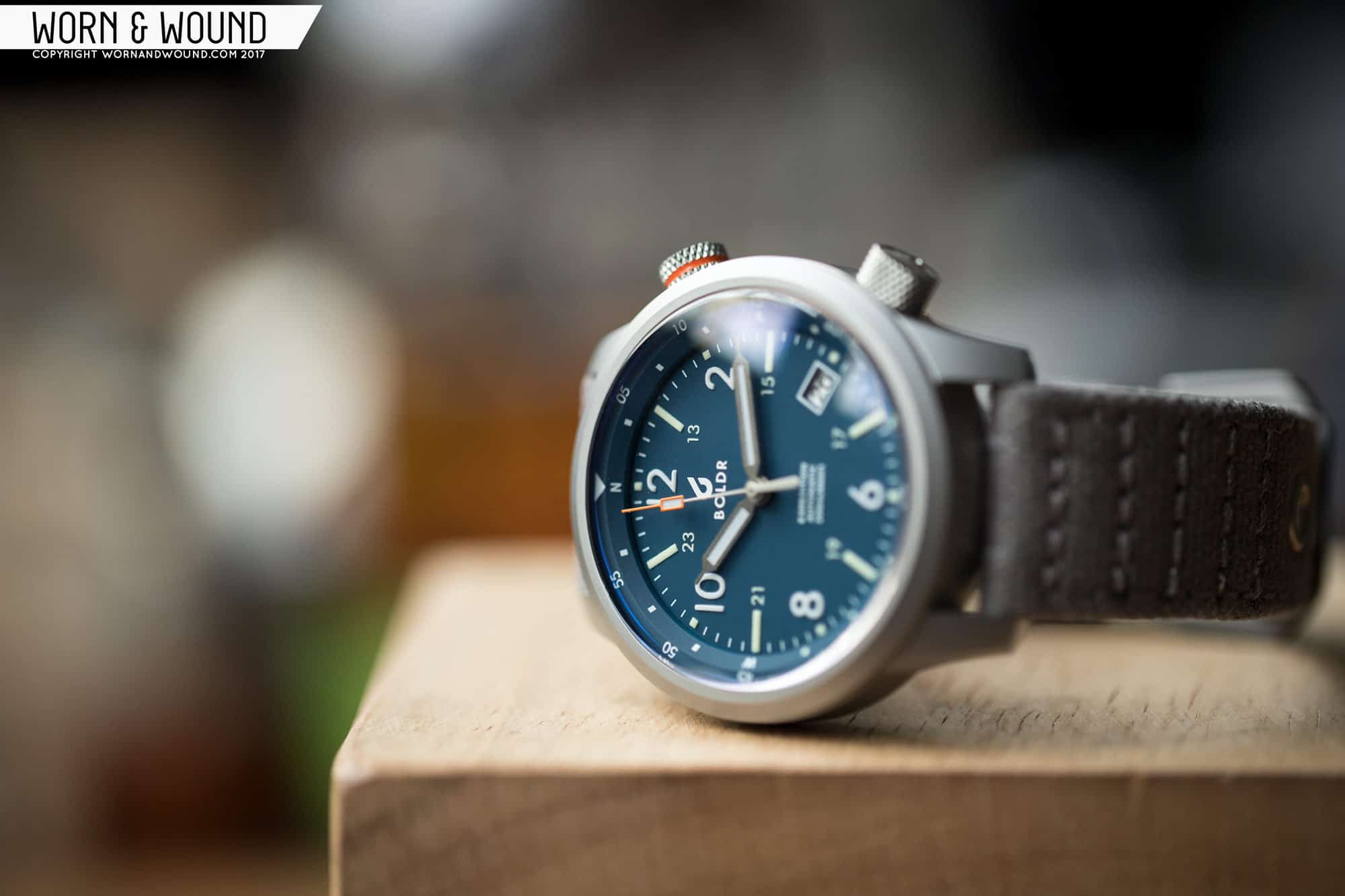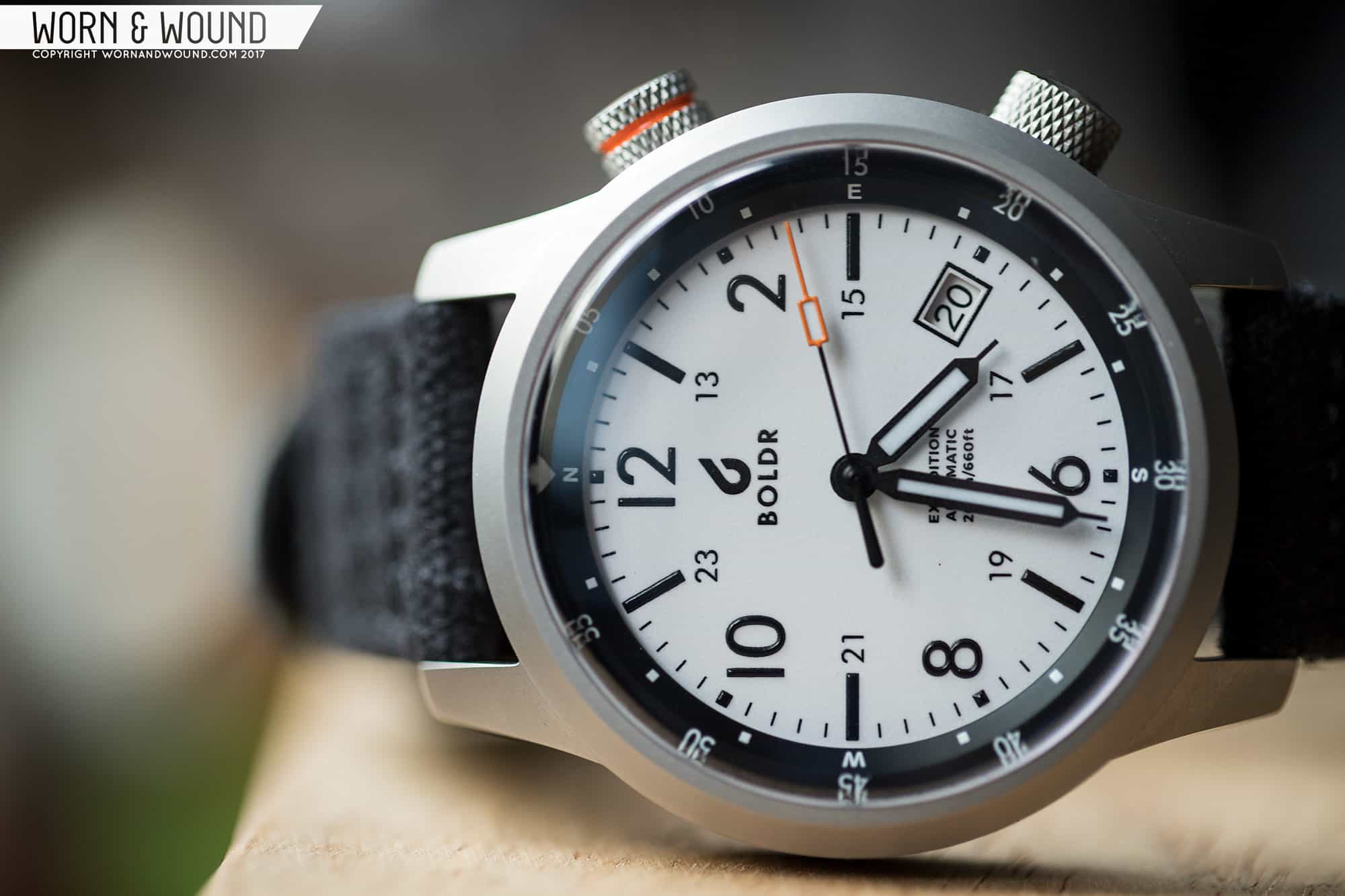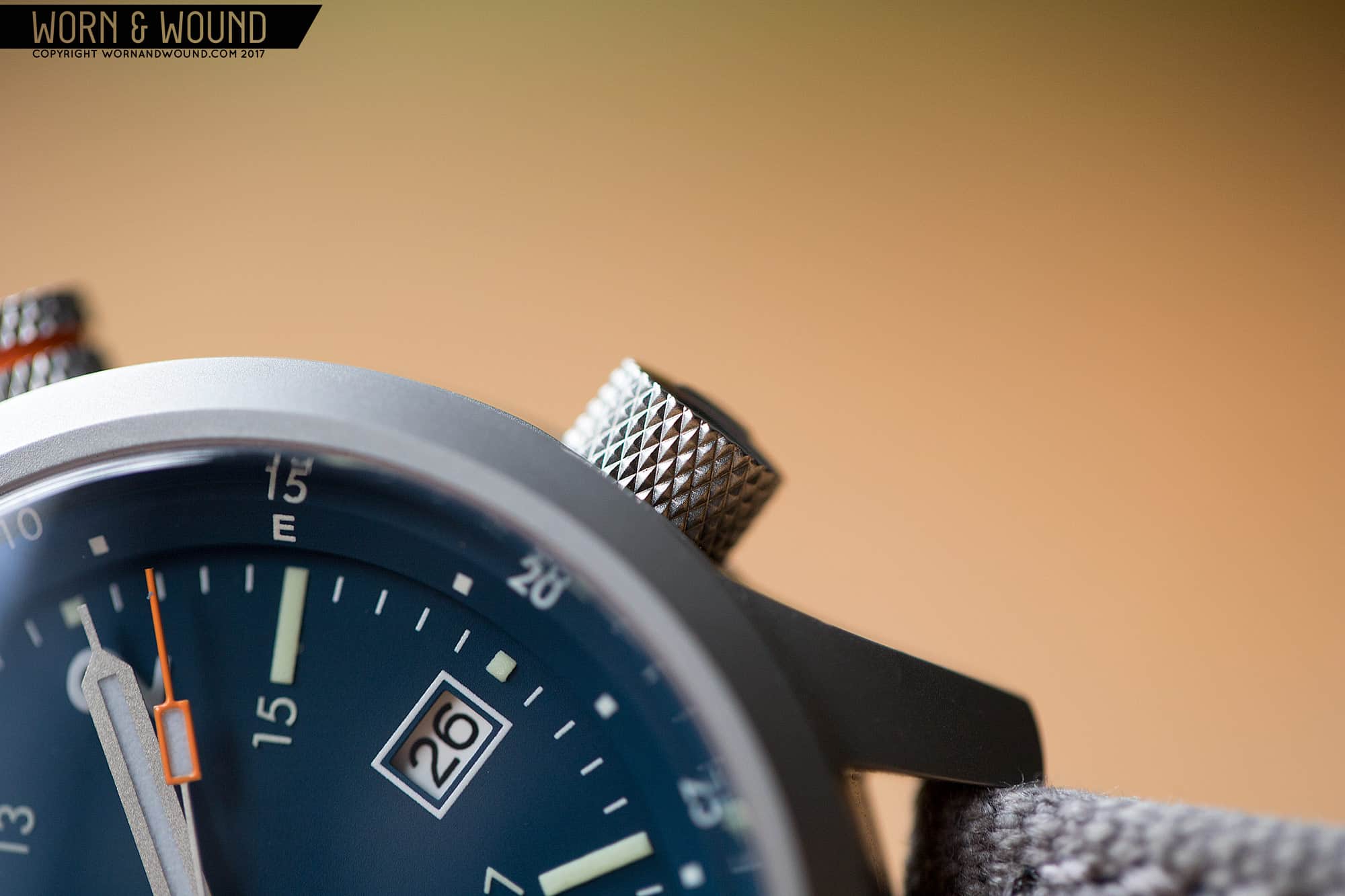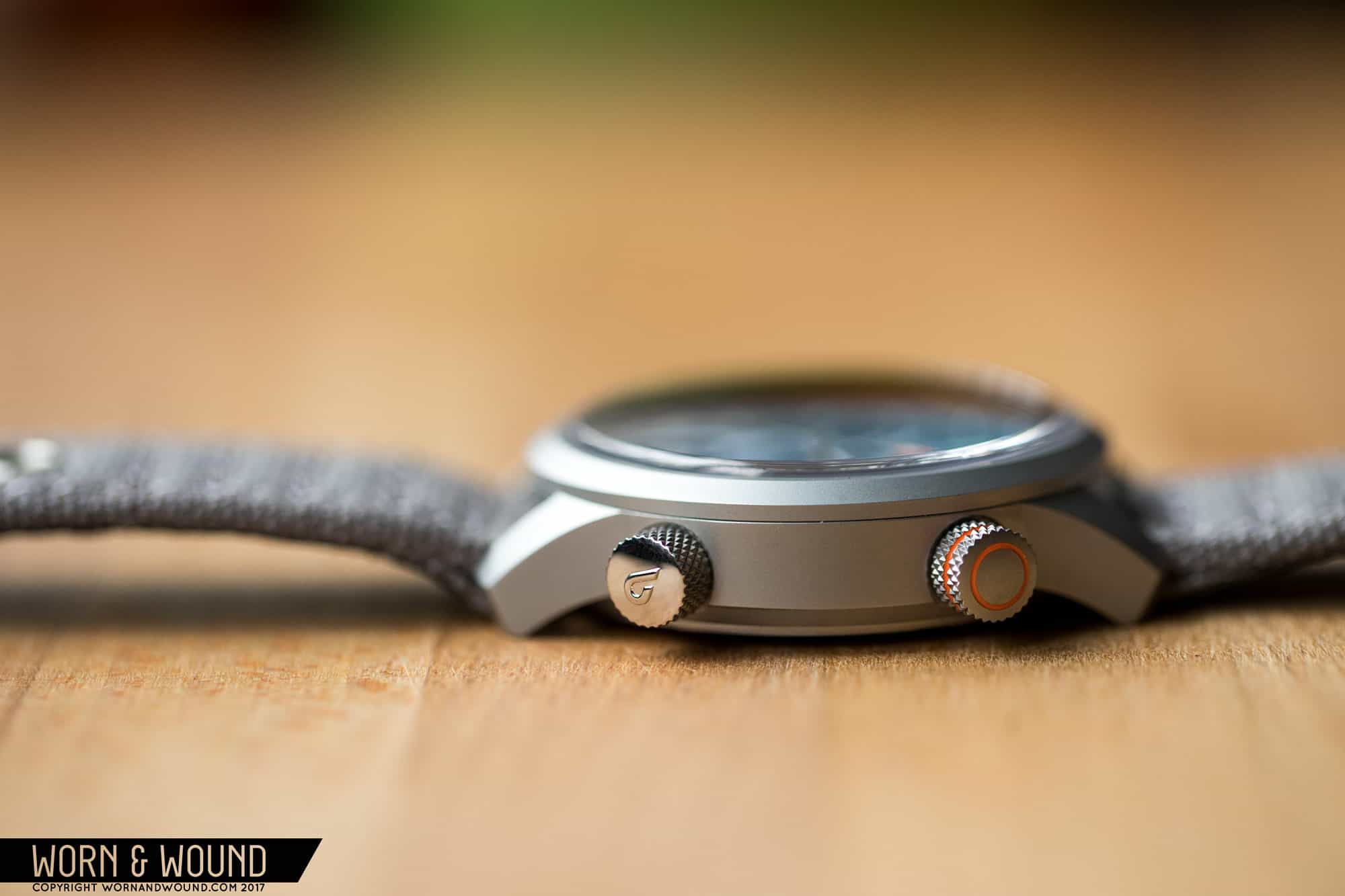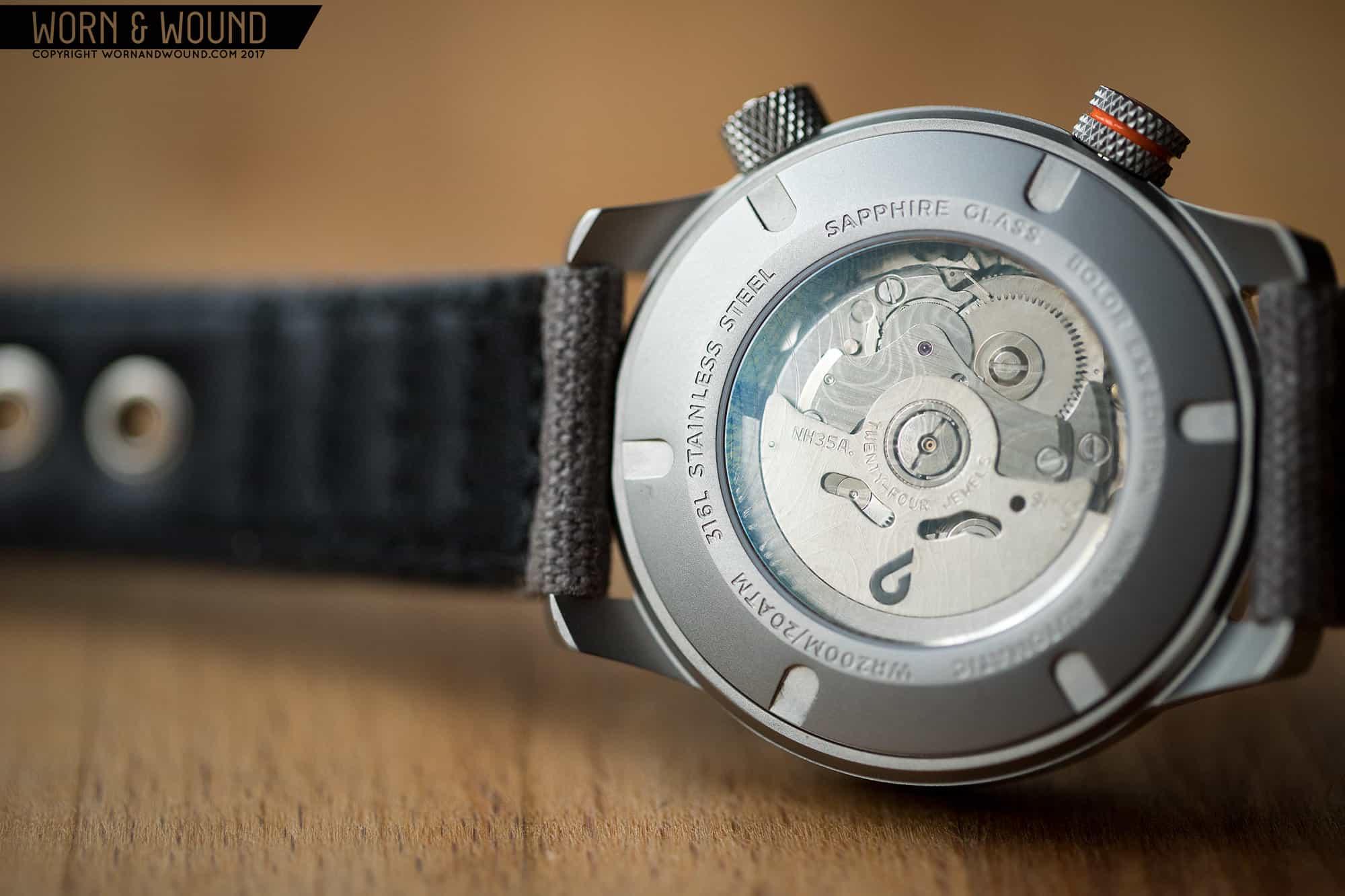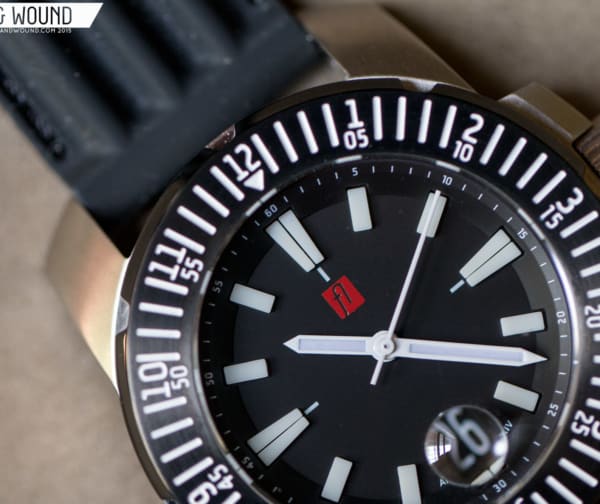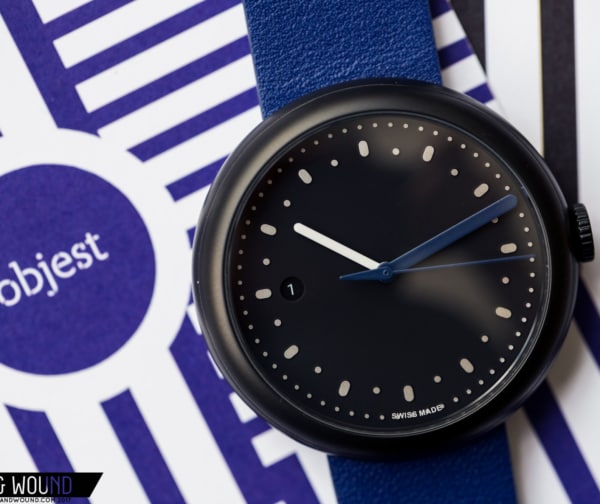Boldr is back with a watch that is hard not to like. Not only is the design very appealing, it’s an incredible value, almost to the point of being too good to be true. The Boldr Expedition, as the name suggests, is an outdoors sport design that sits nicely in Boldr’s line of adventurous, but stylish watches. Aesthetically, it’s undeniably a rugged tool watch, but rather than having overly aggressive details, they air on the side of being, well, pleasant or friendly with a definite retro feel. Featuring a dual crown design, 20 ATM water resistance, a sapphire crystal, a Sellita SW200-1 automatic movement (please note the samples photographed had Seiko movements, but the final will have the Sellita) and six dial/case variations, the Boldr Expedition is a compelling package for $599, or $389 through Kickstarter (while the campaign is live).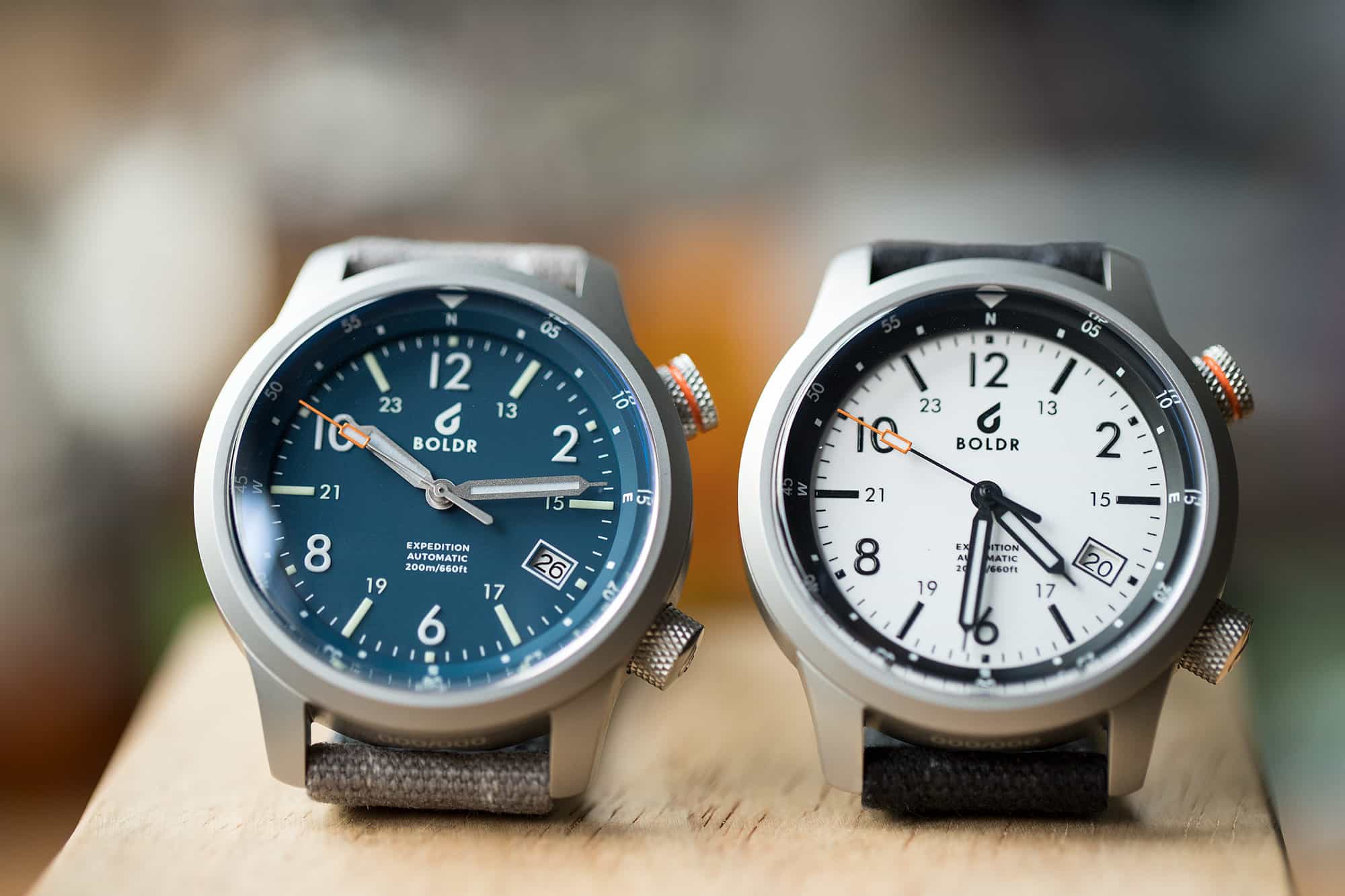
Boldr Expedition Review
Boldr Expedition Review
The case of the Expedition is a wearable, but chunky 41 x 47.8 x 14.2mm. While 41mm is at the top end of what I like to wear, the watch wears well and looks a bit smaller in person thanks to the internal bezel and good proportions. The case design is simple overall, with bead blasting all around, a chamfered crystal and a generally stout build. The biggest standout to my eyes are the dual knurled screw-down crowns. They’re big, but not too big, and the crown at two, which controls the internal bezel, has a groove milled in that has been painted hot orange. Not a common place to find color, and it looks amazing and really gives the watch a feeling of being a piece of gear.
The dial of the Expedition, which comes in a variety of colors, mixes military and explorer designs to create something that while familiar still feels fresh. The primary index consists of large numerals for the even numbers, save four which is replaced by the date, and large rectangles for the odd numbers. It’s highly legible and utilizes an appealing typeface. In a cool touch, the numerals are actually applied lume, adding some depth and texture to the dial. Around this index is a minutes/seconds track with dashes and small lumed squares at intervals of five. In the dark, this thing is a light show, with some variants utilizing different colors of lume for extra impact. Lastly, there is a 13 – 24-hour index in small numerals printed on the inner side of the hour rectangles, showing only the odd numbers. It’s not really needed, but works with the concept, and frankly it looks good.
A great feature of the Expedition is the internal bezel, which has a clever dual-surface design. The bezel is flat on top, but features a wide chamfer which allows them to print indexes on both. The top index features a triangle at the origin, and then small double-digit numerals for the minutes/seconds, allowing it be used for elapsed time or just as a minutes track. I’d love to see a dual-time option here, as that’s my preferred bezel style and it works conceptually with an adventure watch (crossing time zones and such).
The chamfer then features a compass index, with N, E, S, W at the poles and dots every 22.5 degrees. I’m a bit less of a fan of this index. While I see how it works with the story of the watch, it’s uses are highly limited (especially without a 24-hour hand) and the oddly placed 22.5 degree marks don’t align or coordinate with the time, so at a glance they can cause confusion. In an ideal world (where I get everything I ask for) one of the indexes would be dual-time, and the other would be a minutes/elapsed counter.
The six different styles are each named for a different mountain (a nice touch), and of the group we tried out the blue Everest and lume-dialed Eiger. The blue is particularly nice, with a matte finish and a tone that just touches on teal. It’s a subdued hue that looks great against the matte case. This model features the two-tone lume with blue lume on the numerals and hands and green lume for the rest. The Eiger is an outlier of the series as it’s the only all-lume model. The white dial with black markers and black bezel looks very cool, coming off more aggressive than the Everest variety. I’ve never been a huge fan of all-lume dials, but given the concept of the watch, there is a solid use case for it here.
 The Expedition wore very nicely on my 7-inch wrist, fitting well and remaining comfortable. As an all around sports watch, I think they found a nice balance of ruggedness and wearability. It’s also a slick looking watch with just the right amount of boldness from the dial. It’s readable at a glance, sporty and looks great with jeans. The Expedition is fitted with a 20mm canvas strap that is pretty beefy, too. The canvas is heavily padded—it’s likely wrapped around leather—and features eyelets on the sizing hole and leather backing. I was glad to see that they went with something different for the factory strap than leather or nylon. Obviously, both would look great, but they are also likely what you’ll add after, with this strap being a unique option to start.
The Expedition wore very nicely on my 7-inch wrist, fitting well and remaining comfortable. As an all around sports watch, I think they found a nice balance of ruggedness and wearability. It’s also a slick looking watch with just the right amount of boldness from the dial. It’s readable at a glance, sporty and looks great with jeans. The Expedition is fitted with a 20mm canvas strap that is pretty beefy, too. The canvas is heavily padded—it’s likely wrapped around leather—and features eyelets on the sizing hole and leather backing. I was glad to see that they went with something different for the factory strap than leather or nylon. Obviously, both would look great, but they are also likely what you’ll add after, with this strap being a unique option to start.
So, yeah, I’m a big fan of what Boldr did with the Expedition. I often find “adventure” watches appealing as when they are designed well, they sort of cover all of the sport watch bases, but end up with an aesthetic that I just relate to more than stricter sport watches or tool divers. Boldr balances form and function here well, coming out with something stylish, but purposeful. And with the six varieties, there’s likely one that will suit your specific tastes. With a Sellita SW200 inside and a price tag of $599, it’s an exceptional value—and at $389 through Kickstarter, well, it’s extremely tempting.
For more, check out Boldr Supply









 Featured Videos
Featured Videos





